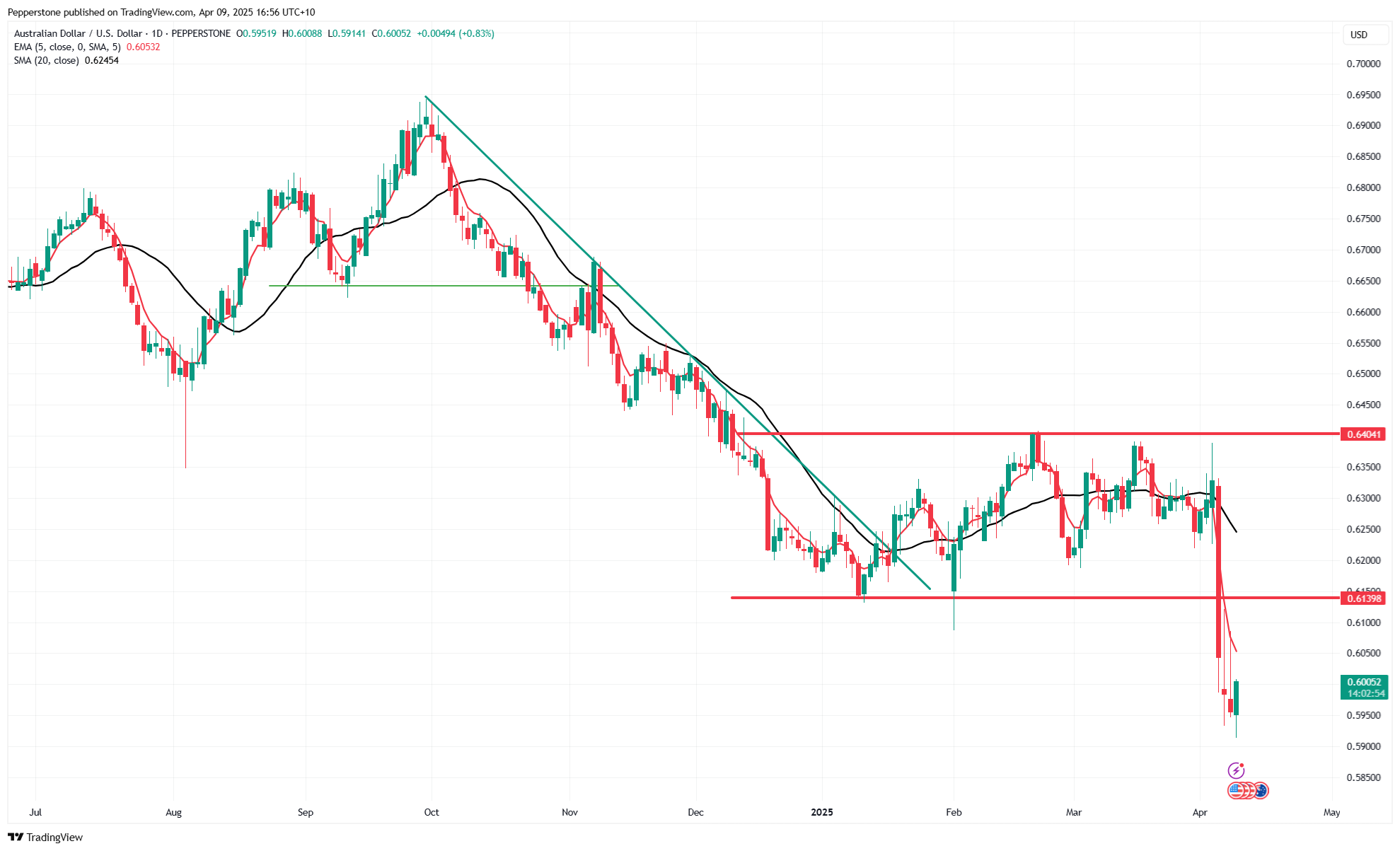- English
- عربي
AUDUSD Falls to 0.5915: What’s Fueling the Australian Dollar’s Sharp Decline in 2025


It’s here that the AUD has been used as the primary vehicle in G10 FX for macro/tactical traders to express drawdown in US and China/HK equity indices, higher cross-asset volatility and a potential trend higher in USDCNH.
It’s no surprise that we see AUDUSD 1-week implied options volatility at the highest levels relative to any other FX pair in G10 FX.
There really is no one isolating factor driving the AUD lower, but really a barrage of negative influences all coming together to create a strong move lower. Clearly, if AUDUSD is to reverse higher we need US and Chinese equities and volatility to fall – and clearly if we take another leg lower in risk, then we run the risk of breaking 0.5500 and over a longer timeframe eyeing a push to the 2020 lows of 0.5510.
What’s Behind the AUD Decline?
- The weakest G10 currency in 2025 – Momentum-focused players who specifically target the weak, see the AUD underperforming all G10 currencies across multiple timeframes - weakness often begets weakness.
- The Default China Proxy in G10 FX – In the wake of the substantial US import tariff increase on Chinese goods, we expect China's net exports to decline in 2025, with 2025 GDP likely set to come in well below the official target of “around 5%”.
- USDCNH trades at/near all-time highs – if the PBoC is set to allow a steady depreciation of the yuan to offset the tariff shock, such as we saw in 2018, a weaker CNH will likely weigh on AUD. The 20-day rolling correlation between USDCNH and AUDUSD is currently at a high -75%.
- Hang Seng futures have fallen 22% from the 20 March highs – The 20-day rolling correlation with AUDUSD is strong at 81%. AUD longs naturally want the HK50 index to kick higher.
- The proxy of risk in G10 FX - S&P500 futures are -20% in the past 33 days, representing the biggest drawdown since Oct 2022. US equity implied volatility rises into extremes with the VIX index rising to 52%. The 20-day rolling correlation between SPX futures and AUDUSD is 63%.
- Relative Data Surprises – the Citi AU-US economic data surprise differential has dropped from +35 in mid-March to -17.
- The Bloomberg Industrial Metals index has fallen 16% since 26 March to the lowest levels since 2020. The 20-day rolling correlation with AUDUSD stands at 60% - the strongest statistical relationship since Sept 2024. Australia vs US relative terms of trade have been in decline since September 2024 and now sit at the lowest levels since April 2024.
- Relative interest rate expectations – Aus v US 1y1y rate differentials are stable, but with Aus swaps pricing 5 25bp cuts in 2025, this has been a net drag on the AUD.
Let’s see how the variables and relationships with the AUD evolve. But if we understand the prominent drivers of the AUD, it can be helpful in our approach to managing risk.
Good luck to all.
The material provided here has not been prepared in accordance with legal requirements designed to promote the independence of investment research and as such is considered to be a marketing communication. Whilst it is not subject to any prohibition on dealing ahead of the dissemination of investment research we will not seek to take any advantage before providing it to our clients.
Pepperstone doesn’t represent that the material provided here is accurate, current or complete, and therefore shouldn’t be relied upon as such. The information, whether from a third party or not, isn’t to be considered as a recommendation; or an offer to buy or sell; or the solicitation of an offer to buy or sell any security, financial product or instrument; or to participate in any particular trading strategy. It does not take into account readers’ financial situation or investment objectives. We advise any readers of this content to seek their own advice. Without the approval of Pepperstone, reproduction or redistribution of this information isn’t permitted.